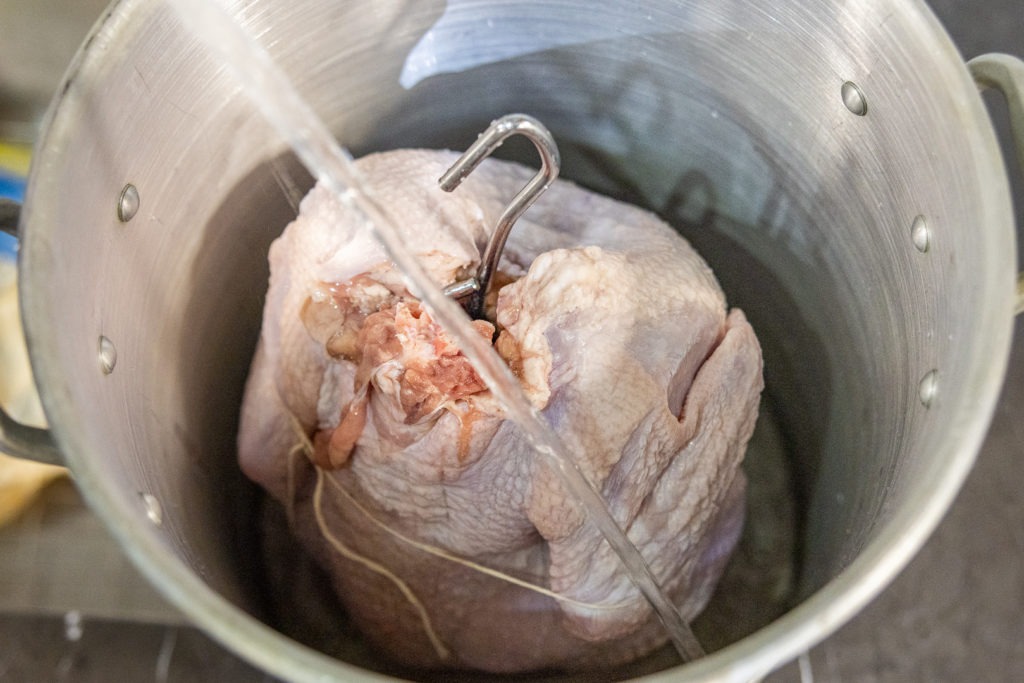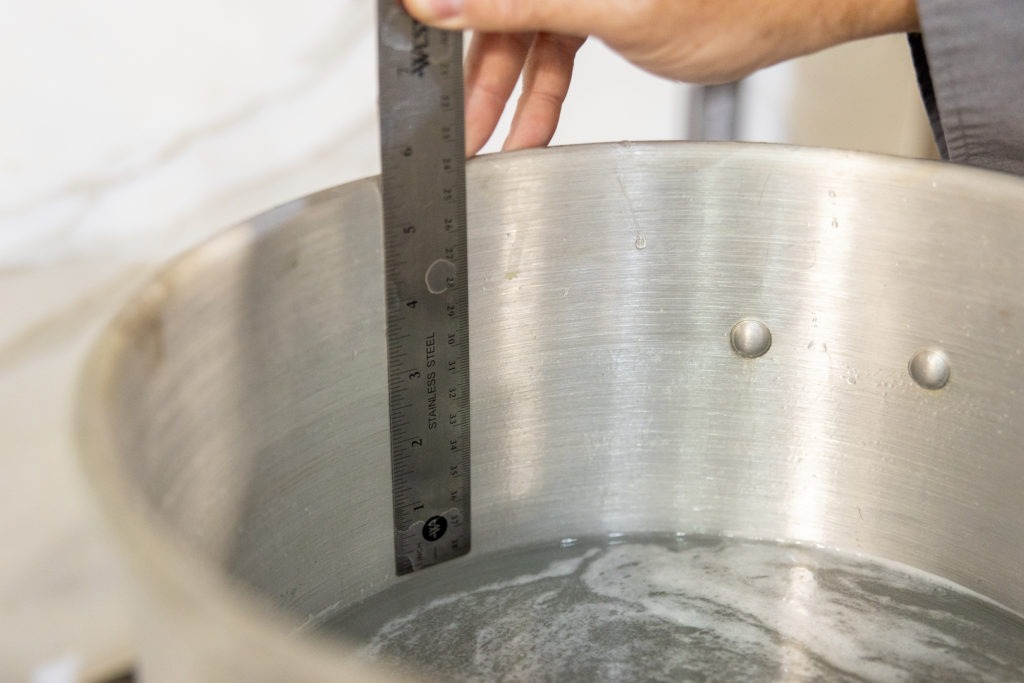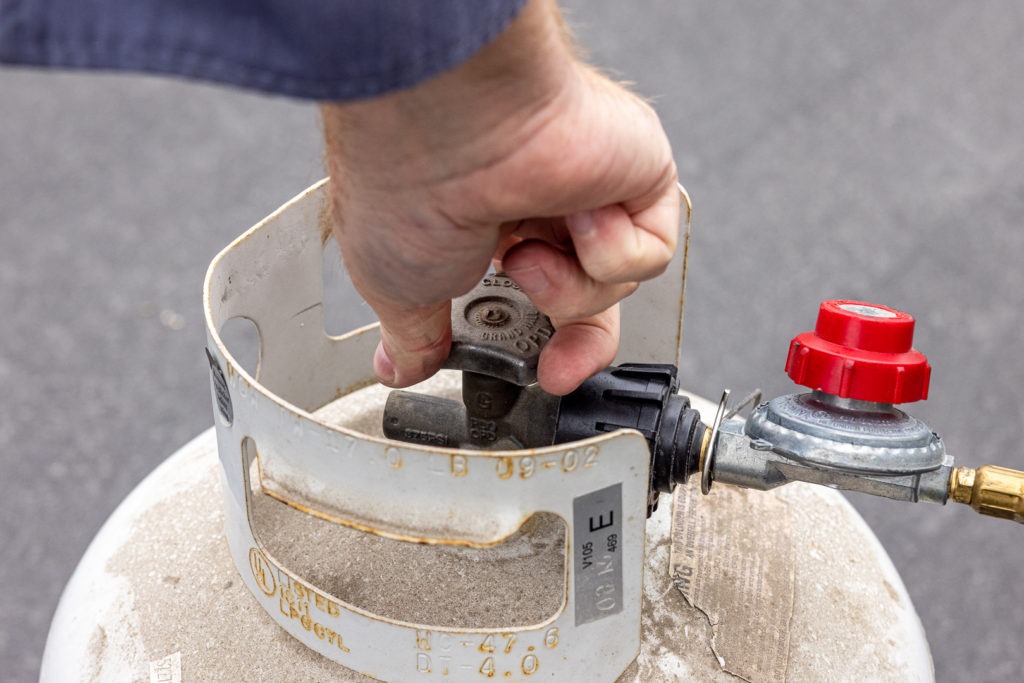This Thanksgiving, are you feeling adventurous? How about deep-frying your turkey instead of cooking it as many people claim that fried turkey is the tastiest, most flavorful, crispy-on-the-outside, and most juicy piece of poultry they have ever tasted? There are many temperature-critical control points in this project, and we have all the advice you need to ensure both the cook’s safety and the quality of the final product.
We plan to use the ThermoWorks® Smoke X2TM 2-Channel Alarm Thermometer in conjunction with a 12′′ Pro-Series® High Temp Probe to measure the critical oil temperature and the turkey meat temperature simultaneously.
Forget the dry bland turkey of your childhood. This Thanksgiving, embrace the juicy flavorful masterpiece that is a deep-fried turkey. While it may require a bit more effort than traditional roasting, the results are undeniably worth it.
Why Deep-Fried Turkey Reigns Supreme:
- Flavor Explosion: Deep-frying locks in moisture, resulting in incredibly juicy white meat and even more flavorful dark meat. The skin, while not always perfectly crispy, avoids the dreaded sliminess of roasted turkey.
- Faster Cooking: Say goodbye to hours in the oven. Deep-frying cooks a turkey significantly faster, allowing you to prepare other dishes without stressing about timing.
- Double the Turkey, Double the Fun: With its quicker cooking time, you can easily fry two turkeys simultaneously, ensuring plenty of leftovers for delicious turkey sandwiches.
- Outdoor Cooking: Free up valuable oven space by taking the turkey outside. This also eliminates the headache of coordinating multiple dishes in a single oven.
- A Fun Activity: Deep-frying the turkey becomes a social event, drawing everyone together around the fryer, even on a chilly day.
Deep-Fried Turkey: A Few Caveats:
- Safety First: Deep-frying involves hot oil, so safety is paramount. Follow instructions carefully and never attempt to fry a frozen turkey.
- Apartment Dwellers Beware: Deep-frying requires a dedicated outdoor space. While indoor fryers exist, they may not offer the same results as traditional outdoor methods.
- Gravy Dilemma: No roasting pan means no drippings, which traditionally form the base for gravy. However, a flavorful chicken stock-based gravy with a touch of sage can easily fill the void.
Deep-Fried Cajun-Spiced Turkey Recipe:
Ingredients:
- 10-12 pound turkey
- ¼ cup + 2 tablespoons paprika
- 2 tablespoons onion powder
- 2 tablespoons garlic powder
- 2 tablespoons chili powder
- 2 tablespoons black pepper
- 1 tablespoon dried basil
- 1 tablespoon dried oregano
- 1 tablespoon salt
- 1 tablespoon cayenne pepper
- 1 tablespoon ground cumin
- About 3 gallons peanut oil
Instructions:
- Prepare the Turkey: Rinse and pat dry the turkey. Combine all spices and rub them generously over the turkey, inside and out. Refrigerate for at least 2 hours.
- Set Up the Fryer: Assemble your fryer kit on a stable, non-flammable surface. Fill the pot halfway with peanut oil and heat to 350°F. Do not overfill!
- Fry the Turkey: Carefully lower the turkey into the hot oil using a basket or stand. Monitor the temperature, adjusting the heat as needed to maintain 350°F. Cook until the internal temperature reaches 170°F in the breast and 180°F in the thigh, approximately 40-45 minutes.
- Rest and Serve: Remove the turkey and let it rest for at least 10 minutes before carving. Enjoy your juicy, flavorful deep-fried turkey!
Additional Tips:
- Use a deep-fry thermometer to ensure accurate oil temperature.
- Have a fire extinguisher readily available for safety.
- Consider brining the turkey for even more juicy results.
- Experiment with different spice blends to create your own signature flavor.
While deep-frying a turkey requires a bit more effort, the reward is a Thanksgiving feast unlike any other. Embrace the challenge, gather your loved ones around the fryer, and prepare to experience the ultimate Thanksgiving bird.
How Much Oil Will I Need?
When the turkey is lowered into the pot, too much oil will cause the oil to bubble and spill over the sides, creating a serious fire hazard. Using enough oil and no more is an important safety precaution.


Fill the empty pot with water until the turkey is covered, then place the turkey—if using a stand—into it. After removing the turkey, measure the distance with a ruler between the top of the pot and the top of the water. This will be the mark to which the pot needs to be filled with oil.
Start the Oil Temperature Low
When there’s too much oil in the pot or when it bubbles too forcefully, it can spill over the pot’s side, making turkey frying dangerous. That safety factor is eliminated from the calculation if the quantity of oil required has been precisely determined through the use of water displacement.
So what causes bubbling? There are three possible causes: 1) an overly cold bird (make sure to thaw it completely), 2) water (make sure to pat the bird completely dry), and 3) an excessively high oil temperature when lowering the turkey into the pot. After heating the oil to 250°F (121°C) in the beginning, carefully lower the bird and raise the temperature to 325–350°F (163–177°C); do not exceed 350°F (177°C).

Fried Turkey
FAQ
Does frying a turkey taste better?
Which is better fried or baked turkey?
Why you should not deep-fry a turkey?
Are fried turkey healthy?
